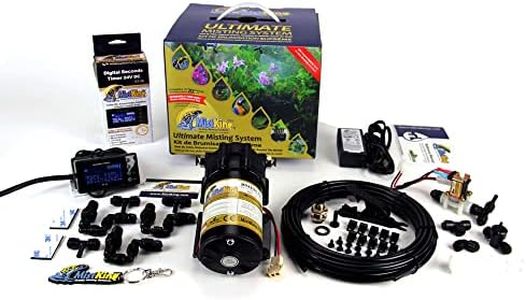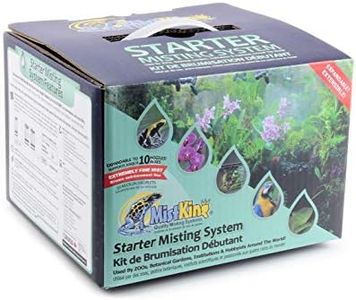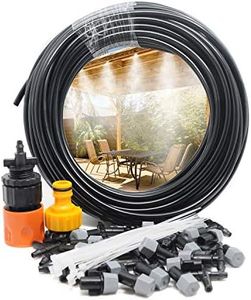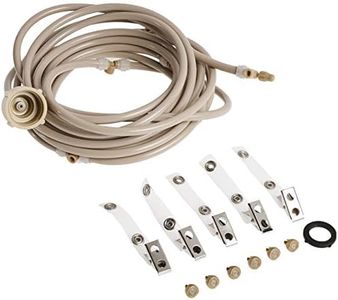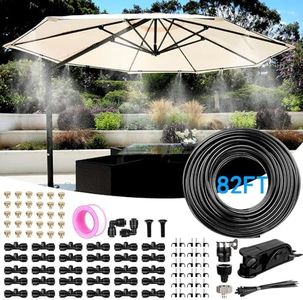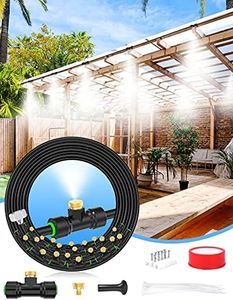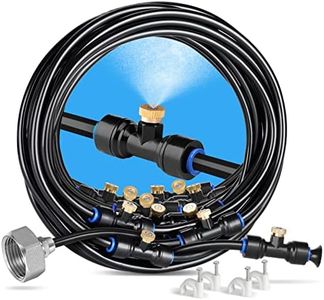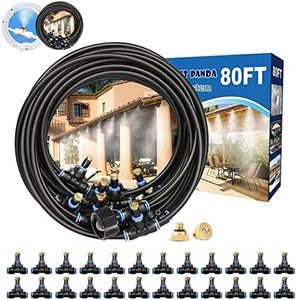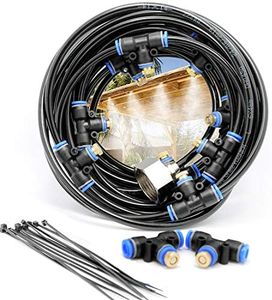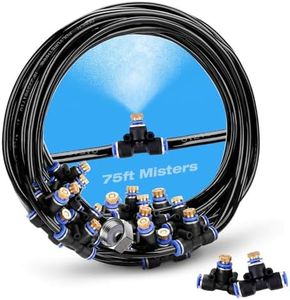We Use CookiesWe use cookies to enhance the security, performance,
functionality and for analytical and promotional activities. By continuing to browse this site you
are agreeing to our privacy policy
10 Best Misting Systems
From leading brands and best sellers available on the web.By clicking on a link to a third party's website, log data is shared with that third party.
Buying Guide for the Best Misting Systems
Choosing the right misting system can make a big difference in how comfortable your outdoor spaces are, especially during hot weather. With so many options, it's important to understand the main features that matter and how they fit your specific needs. Whether you want to cool your patio, water your garden, or reduce dust, knowing which specifications to focus on will help you make a confident decision.Water PressureWater pressure is a measure of how much force the water has as it moves through the misting system. This is crucial because the pressure affects the size and spread of the mist droplets. Low-pressure systems rely on normal household hose pressure, and they produce coarser, wetter mist, which can be okay for home patios or plants. Medium-pressure systems need a booster pump for finer mist, giving a balance between cooling and not wetting surfaces too much, making them suitable for cafes or larger backyards. High-pressure systems use special pumps to create a very fine, almost fog-like mist that evaporates quickly and offers strong cooling without making things wet, commonly chosen for commercial settings or when maximum cooling is needed. To pick the right one, consider the area you want to cool, how dry you want the surface to remain, and whether you’re comfortable installing extra pumps.
Nozzle Type and SizeThe nozzle determines how the water is sprayed and how fine the mist will be. Smaller nozzle holes produce fine mist, which evaporates quickly and cools the air effectively without getting things too damp. Larger nozzles allow more water through, which can be better for watering plants but might leave surfaces wet. Nozzle material also affects durability; brass and stainless steel last longer and are usually easier to clean. Think about if your goal is primarily cooling people, watering plants, or dust control—cooling needs finer, smaller nozzles, while watering or industrial use can use larger ones.
Coverage AreaCoverage area is the total space a misting system can effectively cool or water. This depends on both the length of the tubing and the number and placement of nozzles. For small patios or balconies, you only need short lengths and few nozzles, while larger decks or gardens will need systems with longer tubing and more nozzles placed throughout. Before buying, measure the area you want to cover so you can choose a system that fits without overspending or ending up underpowered.
Tubing MaterialTubing is what carries water from your supply to the nozzles, and its material affects durability and flexibility. Plastic tubing is budget-friendly and easy to install for smaller, temporary setups, but it can get damaged by sun exposure over time. UV-resistant plastic is better for outdoors, and flexible enough for DIY installations. Metal tubing (usually copper or stainless steel) is much stronger, lasts longer, and resists UV and weather damage but can be trickier to install. If you want a permanent solution, invest in metal or high-quality plastic designed for outdoor use.
Ease of InstallationSome misting systems come as easy-to-install kits that just click together and connect to a garden hose, while others require more involved installation with pumps and mounting brackets. Think about your comfort with DIY projects—if you want something quick and temporary, go for basic kits. For a permanent and professional look, be prepared for more steps or consider professional installation.
